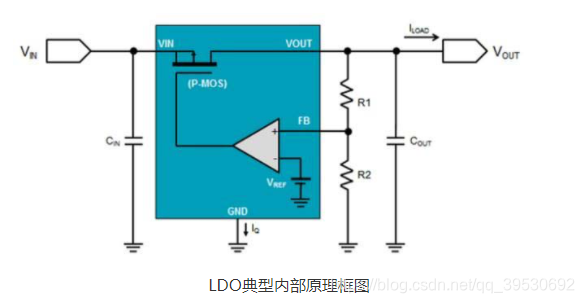LDO:
LDO stands for low dropout regulator, which is a low dropout linear regulator . This is relative to the traditional linear regulator . Traditional linear regulators, such as 78XX series chips, require the input voltage to be at least 2V~3V higher than the output voltage, otherwise it will not work properly. However, in some cases, such conditions are obviously too harsh, such as 5V to 3.3V, 3.3V to 1.5V, and the voltage difference between input and output is less than 2V. Obviously, this does not meet the work of traditional linear regulators. Conditional. In response to this situation, chip manufacturers have developed LDO-type voltage conversion chips.
The tube of the linear power supply (LDO) works in the amplifying zone and is in the amplifying state. The linear power supply LDO can only step down, not step up. The power loss of the LDO is mainly consumed on the switch tube, which is the maximum dissipation power loss of the switch tube, so the efficiency is extremely low.
LDO: The outstanding advantage of the low dropout linear regulator is the lowest cost, the lowest noise and the lowest quiescent current. It also has few peripheral components, usually only one or two bypass capacitors. The new LDO can achieve the following indicators: 30μV output noise, 60dB PSRR, 6μA quiescent current and 100mV dropout voltage. The main reason that the LDO linear regulator can achieve these characteristics is that the internal regulator tube uses a P-channel field effect tube instead of the PNP transistor in the usual linear regulator. The P-channel field effect transistor does not need to be driven by the base current, so the power supply current of the device itself is greatly reduced; on the other hand, in the structure using the PNP transistor, in order to prevent the PNP transistor from entering the saturation state and reducing the output capability, it must be Large input and output pressure difference; and the pressure difference of the P-channel FET is roughly equal to the product of the output current and its on-resistance, and the extremely small on-resistance makes the pressure difference very low. When the input voltage and output voltage in the system are close, LDO is the best choice, which can achieve very high efficiency. Therefore, LDO is mostly used in applications where the voltage of a lithium-ion battery is converted to a 3V voltage. Although 10% of the last discharged energy of the battery is not used, the LDO can still provide a longer battery life in a low-noise structure.

DC-DC:
The tube of the switching power supply (DC-DC) works in the saturation zone and the cut-off zone, and is in the on-off state. One of the functions of switching power supply (DC-DC) includes voltage conversion (boost conversion\buck conversion\AC/DC conversion (AC/DC, DC/AC)\polar conversion (positive and negative polarity conversion, single power supply) And positive and negative power conversion, single power and multiple power conversion)).
In the DC-DC, the DC direct current power supply is first transformed into an alternating current power supply AC. It is usually a self-excited oscillating circuit, so discrete components such as inductors are needed outside. Then pass the integral filtering at the output end, and return to the DC power supply. Since AC power is generated, it can be easily boosted and bucked. Two conversions will inevitably produce losses. This is the problem that everyone is working hard to study how to improve the efficiency of DC-DC.
DC-DC includes boost (boost), buck (step-down), Boost/buck (boost/buck) and inverting structure, with high efficiency, high output current, low quiescent current, etc., with the improvement of integration Many new DC-DC converter peripheral circuits only need inductors and filter capacitors; but this type of power controller has relatively large output ripple and switching noise, and relatively high cost.